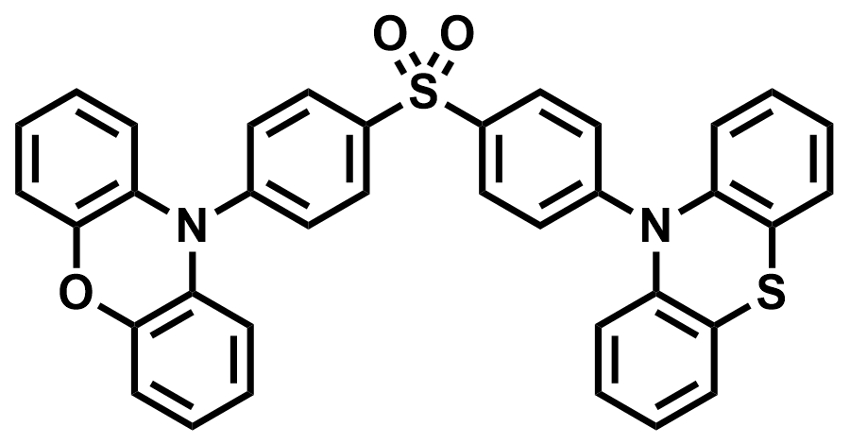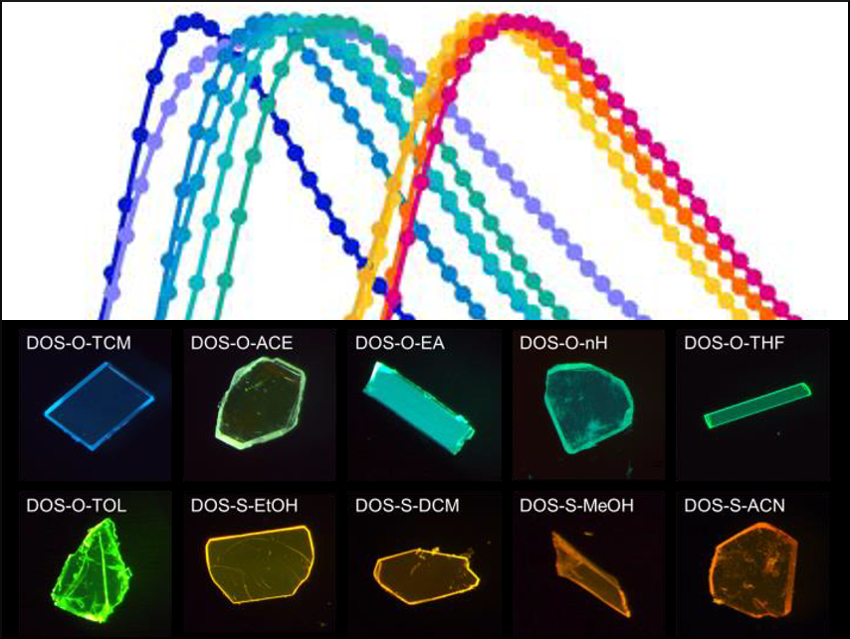Soft luminescent materials have applications in optoelectronics, data recording and storage, anti-counterfeiting, and sensing. However, in most cases, only one chromophore is involved in the luminescence of these materials. The selective expression of chromophores—i.e., using different chromophores in a single molecule for luminescence—is challenging.
Zhenguo Chi, Sun Yat-Sen University, Guangzhou, China, and colleagues have developed the first example of an asymmetrical soft organic molecule with two different chromophores, which they have called DOS (pictured below on the right). DOS allows the selective expression of chromophores. In this molecule, two different donor units, an oxygen-containing phenoxazine and a sulfur-containing phenothiazine, are attached to a central acceptor diphenyl sulfone core.
Depending on various external stimuli such as solvents, pressure, or heat, different chromophores of DOS are active and the material has different luminescence colors. The molecule shows emissions peaking between 469 nm and 583 nm in ten single crystals obtained using different solvents (pictured above). 
DOS has useful optical behaviors, including thermally activated delayed fluorescence (TADF), room-temperature phosphorescence, and mechanoluminescence. It could, e.g., be used for the detection of volatile organic compounds (VOCs) or for multicolor dynamic displays.
- Selective expression of chromophores in a single molecule: soft organic crystals exhibiting full-colour tunability and dynamic triplet-exciton behaviours,
Wenlang Li, Qiuyi Huang, Zhu Mao, Juan Zhao, Huiyan Wu, Junru Chen, Zhan Yang, Yang Li, Zhiyong Yang, Yi Zhang, Matthew P. Aldred, Zhenguo Chi,
Angew. Chem. Int. Ed. 2019.
https://doi.org/10.1002/anie.201915556




